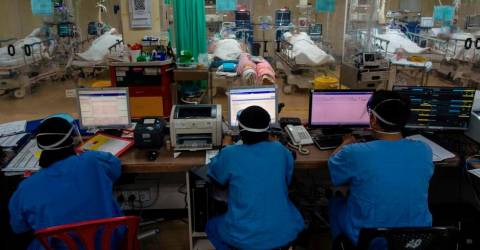Are we ready for innovative heart disease treatment? Leave a comment

ISCHEMIC heart disease remained the leading cause of mortality in Malaysia, accounting for 18,515 or 17% of fatalities in 2020, up from 11.6% in 2000.
In addition to other Asian nations, ischemic heart disease is the leading cause of death in Singapore, Thailand and the Philippines.
Similar trends were observed in developed nations such as the US, Japan, the UK and Australia.
Heart disease has also recently been rising among both older and young adults.
According to the former health director-general Tan Sri Dr Noor Hisham Abdullah, the expense of treating heart diseases in this country will continue to rise if stakeholders do not take appropriate measures to control and prevent the condition.
The country spent RM3.93 billion of the total RM9.65 billion in healthcare costs in 2017 to treat heart patients.
Ongoing innovation is required to treat and support cardiac patients in regaining their quality of life.
Researchers from Universiti Malaya, as with other groups globally, are looking into less invasive and less expensive stem cell methods that could regenerate the heart to treat ischemic heart disease.
As stem cell therapy is a novel treatment, it is still being determined whether the Malaysian public will appreciate it.
In addition to clinical studies, more research on public behaviour in health decision-making in Malaysia needs to be done.
Most research only concentrates on stem cell therapy’s scientific validity, including side effects, recovery period and pain level, but not on the hows and whys of healthcare decision-making.
Therefore, UM researchers in consumer psychology and biomedical engineering undertook a novel study to examine the behavioural psychology of the Malaysian public regarding heart disease treatments.
The study investigates the acceptability of traditional open-heart surgery versus minimally invasive stem cell treatment for various cardiac diseases.
This study examines the effects of perceived severity, perceived susceptibility, perceived benefits, perceived barriers, trust and attitude toward novel treatment among Malaysians with a personal or family-related experience with heart disease.
The team identified four crucial criteria in heart disease treatment decisions based on a quantitative investigation.
Public acceptance of innovative heart disease treatments highly depends on:
1) the perception of the benefits of the treatments;
2) the perception of susceptibility to the treatment;
3) the level of trust in the treatment, which is related to risk; and
4) the overall attitude towards the technology used in the treatment, in this case, if the public does not believe in stem cells they will refuse to be treated.
This study revealed fresh insights into the acceptability of novel heart treatments: firstly, Malaysians are more likely to accept them if they can comprehend and perceive the benefits.
Secondly, people will re-evaluate their decision if the technology is susceptible (vulnerability), ultimately affecting their trust and attitude towards any innovative health therapy.
Thirdly, when considering modern medical treatments, including robotics, vaccination and organ donation, the Malaysian population’s trust and attitude towards it concur with the outcome of past research in consumer psychology in the healthcare setting.
The Malaysian healthcare system therefore should consider these elements when attempting to comprehend the patient’s psychological decision-making to ensure acceptance of new medical treatments that may cost the country billions of dollars.
As Malaysia’s leading cause of death, people must be taught adequately through public awareness programmes and initiatives to reduce their vulnerability, increase their trust and improve their attitude and perception of innovative health treatment, particularly cardiac treatment.
Although healthcare professionals and related authorities have made numerous efforts to increase public awareness, facts alone are insufficient to alter public opinions of any intervention.
They must connect with individuals on an emotional level and use language that the typical person can comprehend.
This effort requires partners, including healthcare systems, providers, government agencies and insurance companies.
Government agencies and regulators can use the findings to design better policies and future campaigns to educate and protect the well-being of Malaysians.
In addition, this study acts as a feasibility assessment for medical device businesses before they invest in stem cell technology, enabling them to manage their resources and access the healthcare market properly.
The writer is a professor at the Department of Management, Faculty of Business and Economics, Universiti Malaya. Comments: letters@thesundaily.com


